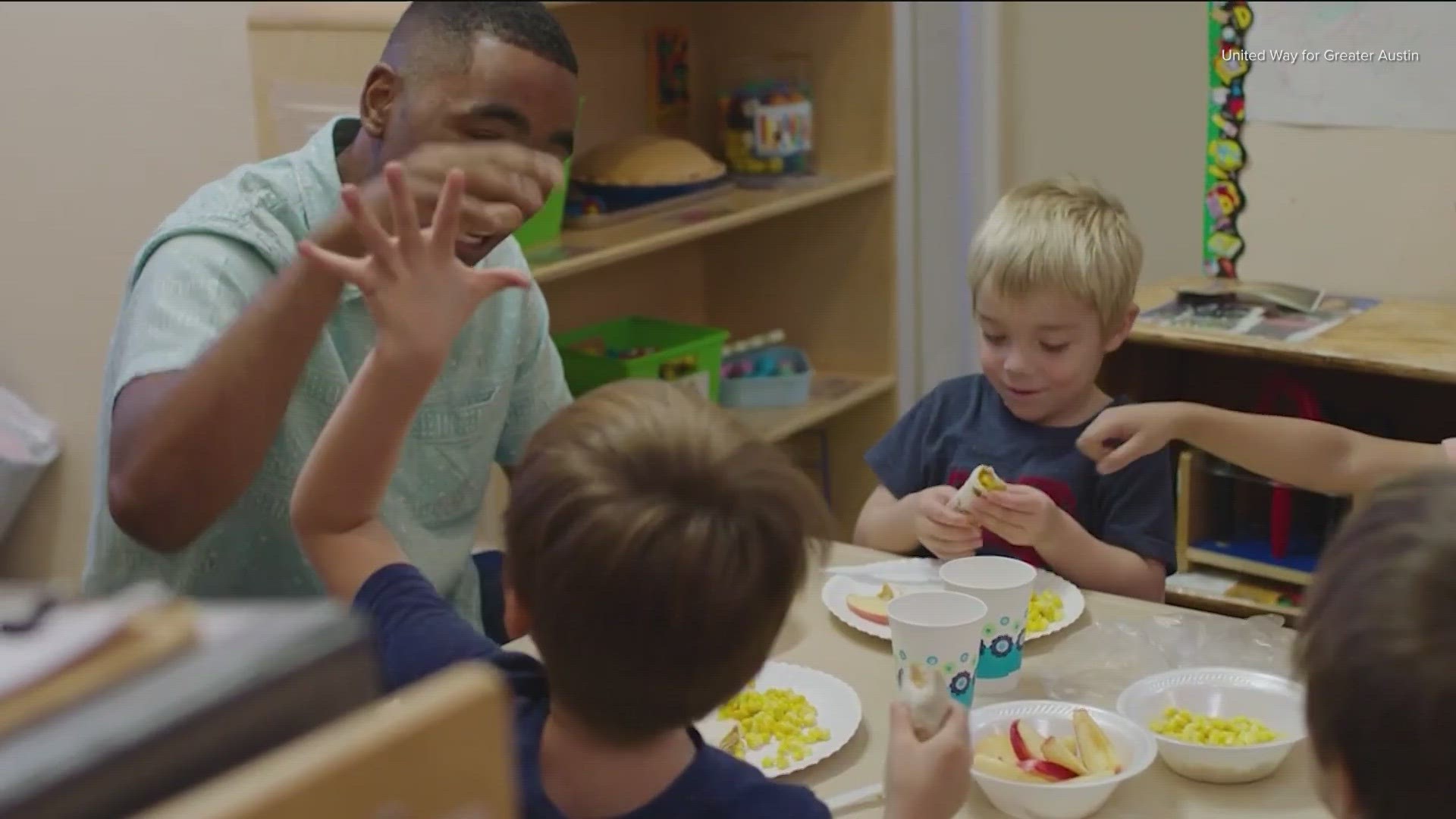AUSTIN, Texas —
Child care in Central Texas can be hard to find – and affordable child care is even harder to locate. But United Way of Greater Austin is helping connect people to resources they can afford.
United Way is a nonprofit that has a community-wide coalition that networks to find high-quality child care, as well as resources to afford it. This network is something that has had a major impact on local providers and local families.
The nonprofit has its Connect ATX call line that helps parents navigate resources like the Workforce Solutions child care program, federally-funded head-start programs through Child Inc., public schools and Pre-K programs.
Additionally, United Way is able to keep track of what is available to people in the area and statewide.
"We know families want to get back to work. We know families need resources to help find that care and to find the financial assistance. And so, we provide that support to the community," said Catherine McHorse, United Way of Greater Austin's vice president of Success by 6.
They work with the Texas Childcare Availability online portal, where parents can search for child care by ZIP code. It shows them what providers near them have openings and if they take financial assistance.
These are all resources Yardisa Cerrato, a working parent in Austin, said were able to help her get back to work.
"It did seem like I had to – I was going to have to quit and stay at home because, basically, I was paying my whole check. So one check for me and one check for them because it was so much," Cerrato said.
United Way is also able to help parents research to see which program is best for them based on work status and income eligibility, alongside other requirements.
United Way compiled the following list of resources for KVUE:
The portal indicates the hours of operation for various child care companies, location, whether child care subsidies and/or scholarships are accepted and if they have available openings
Look for stars! Texas Rising Star is an accreditation – a sign that this program has met quality standards
It's important to note that family-based or licensed/registered child care homes are great options that are often untapped resources
Families are encouraged to seek regulated care, according to the Texas Department of Health and Human Services
Child care subsidy or scholarship waiting list
Openings are intermittent, so it’s best to be positioned on the list with Workforce Solutions Capital Area or Rural Capital Area.
Child Inc.’s mission is to provide high-quality education and comprehensive support services for children and their families while promoting personal and social responsibility in the community.
The nonprofit is currently enrolling families for the 2022-23 and 2023-24 school years.
School districts and charter schools
Schools offer public Pre-K for 3- and 4-year-olds. Many are already registering for the 2023-24 school year. To register your child in one of these programs, they must be three or four by Sept. 1, 2023.
For more info about Pre-K programs, refer to the E3 Alliance resource page, which is offered in both English and Spanish. It includes contact information for all regional public school districts.
Parenting education and support
For families that are seeking support for child development and information, there are also many organizations that provide short-term parent education and support, including home visiting. These programs include Healthy Families Travis County, Strong Start with the SAFE Alliance and Any Baby Can's Parents as Teachers program.
All of these programs can be found on ConnectATX's resource page.
ConnectATX, powered by United Way for Greater Austin, helps families find local resources for child care, baby supplies, food, job training and more.
Anyone can access ConnectATX for free by phone, text or chat, Monday through Friday from 8 a.m. to 6 p.m.
Call 833-512-2289, text your zip code to 85511 or visit the website to connect with a ConnectATX Helpline Navigator. Help is available in English, Spanish and over 200 languages.
Anyone can also search for local resources on their own by visiting the website - just enter your zip code to get started! The website is available in over 70 different languages.

